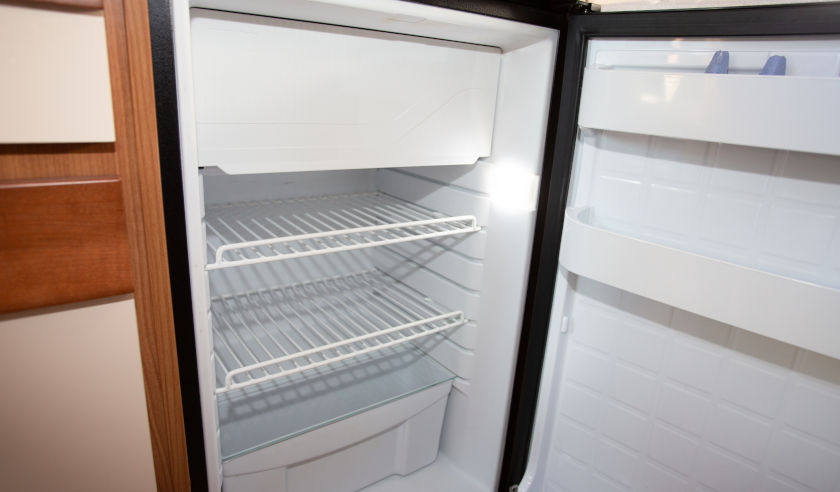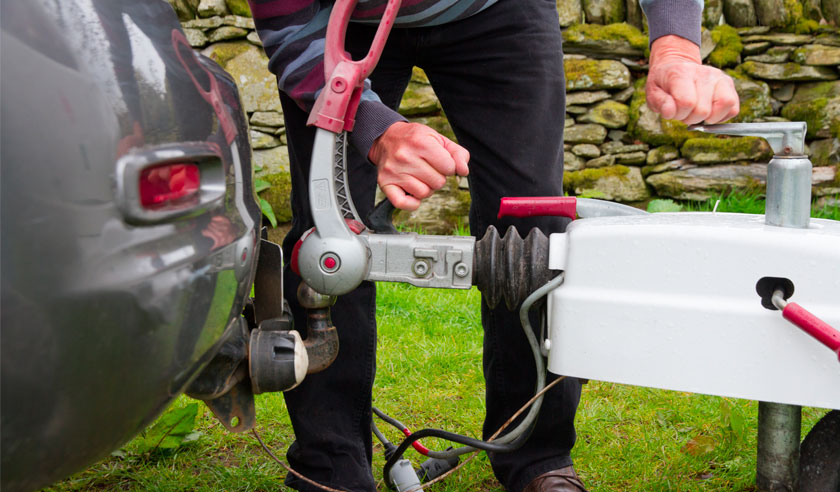Making sure your touring food is always fresh and chilled as appropriate will be easy with our handy guide to touring caravan fridges.
Types of touring caravan fridge
There are generally two types of fridge in a touring caravan – a 2-way compressor fridge or a 3-way absorption fridge.
2-way compressor fridges
2-way compressor fridges can run on mains power (230V AC) or leisure battery power (12V DC) and are often found in campervans. A highly efficient fridge system, the 2-way compressor unit can keep the temperature of its contents extremely cold but, like a domestic fridge, they are extremely noisy.
3-way absorption fridges
Usually found in caravans, 3-way absorption fridges contain ammonia which is heated until it turns into a vapour. As the vapour evaporates, the warmth from the inside of the fridge is extracted. The biggest advantage of a 3-way absorption fridge is that it runs on LPG and is completely silent when running. However, this type of fridge needs to be absolutely level and this makes it an impractical choice for wild camping.
An alternative to the caravan fridge is a thermo electric cooler. While these do not reach the same temperatures as a conventional fridge, they do not need to be completely level. Heavily dependent on the ambient temperature, coolers will maintain a temperature of around 20-25 degrees below the ambient, depending on the model. The Milenco MyCoolman Thermoelectric Cooler/Warmer runs on 12V or 240V with a 12V converter (not included) and cools to 18 degrees below ambient. Compact and lightweight, the cooler features a USB socket for device charging, a carry strap and has a 9.5L capacity.
Can I use a domestic fridge in a touring caravan?
Theoretically, yes, but dedicated caravan fridges are designed to be the correct size and shape for a caravan and will cope with awkward spaces that exist around obstructions like wheel arches. A domestic fridge needs a 240V mains electricity supply so you would only be able to use it when connected to an electricity hook up, and it would not work while you were travelling. Domestic fridges also make a lot of noise and while this noise goes largely unnoticed at home, it can become hard to bear in a small space like a caravan.
How to winterize your fridge
Make sure the fridge is completely empty and disconnect it. Wipe the interior surfaces and leave the door slightly open while it is not being used, to reduce the chance of mould or mildew developing around the door seals.
Preparing your fridge for a new season
After any prolonged period of not being used, and especially when preparing for a new season, your fridge will need particular attention. Removable fixings like shelves and drawers should be washed thoroughly and the interior of the fridge should be sprayed with a solution of bicarbonate of soda in water, or a vinegar/water solution. Leave the solution on stubborn areas for several minutes before wiping off with a damp cloth. Dry the inside of the fridge thoroughly, wiping over the surfaces with a cut lemon, and replace shelves and drawers. Leave the door ajar so that it remains ventilated and dries thoroughly before use.
Preparing your fridge for touring
A fridge that runs continuously is more efficient than one that is switched off in between trips. If it is possible, leave the fridge plugged in to an appropriate power source when parked up at home and in this way, it will be ready to go at a moment’s notice. However, where a fridge is left without power, always leave the door open slightly. When in use, try to keep the fridge full as this will help it to run more efficiently and will also reduce power drain.
If you have any queries regarding the upkeep or maintenance of your touring fridge, at BEC Ingoldmells we have a network of highly skilled and trusted engineers that we can put you in touch with. Simply contact us with your enquiry.























